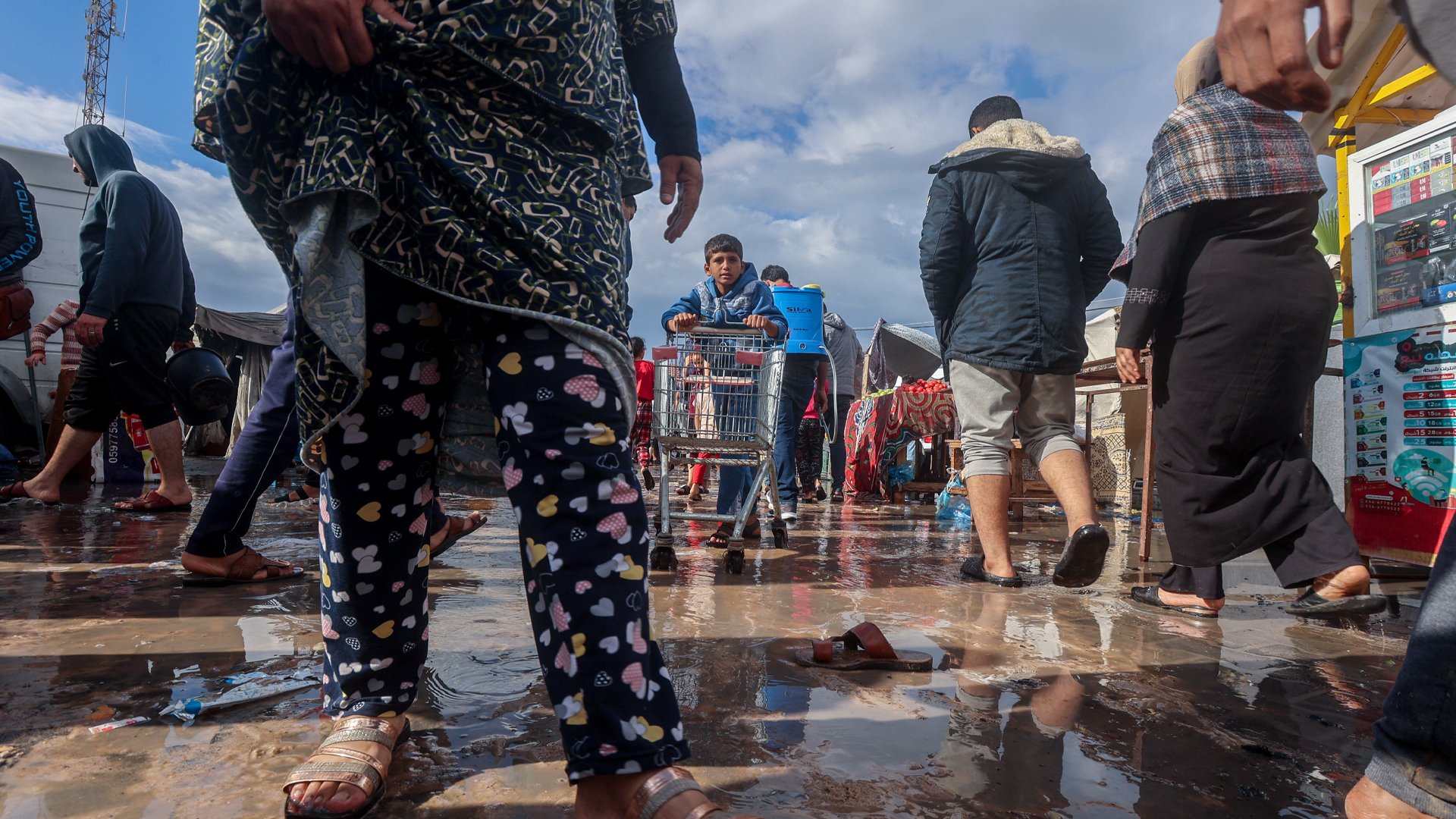
The number of kidnapped, dead, injured and displaced in the Israel-Hamas conflict tells a story of human suffering on all sides.
Initially, the Canadian government strongly condemned the terror attack on Israel and only belatedly called for respect of international humanitarian law as casualties rose in Gaza. In the weeks since then, Ottawa has began advocating for a “humanitarian pause” to allow more aid to reach civilians trapped in the line of fire.
The initial reaction by the federal government resulted in a sharp rebuke from NDP foreign affairs critic Heather McPherson, who noted: “If Canada truly believes in international law, we call it out every time it’s broken. It doesn’t matter about the context.”
In other words, rights violations and the ensuing human suffering in conflict should be acknowledged, regardless of which side is responsible.
Canada could show its commitment to international law in such conflicts via a “protection of civilians” policy. Such an approach focuses on the recognition of human suffering and the need to prevent harm to civilians – by definition people not participating in the fighting –on all sides.
A comprehensive protection of civilians policy – if the federal government had one – would have guided its positioning on the conflict. Instead, its approach has been based on its long-standing support for Israel, often at the expense of Palestinian rights.
Ottawa’s more recent calls to address humanitarian issues now appear to be primarily a reaction to a shift in the political mood in various Western capitals as the horrors and the harm to civilians grow.
Adoption of a protection of civilians policy for use in future conflicts would enable Canada to reaffirm its support for a “rules-based international order” and human rights, as well as help to have a clear, thoughtful and nuanced response based on its priorities and interests.
With clarity also comes the ability to defend hard positions and avoid purely reactive responses.
That would send a strong signal about walking the talk, especially when the perceived hypocrisy of the West is being highlighted in its swift condemnation of Russian occupation and civilian harm in Ukraine, compared to its slower response to human suffering in Gaza.
Canada could be as nuanced as Ireland was in the early days of this conflict. While condemning terrorism categorically, Irish leaders situated their response in the language of protection of civilians and took note of harm on both sides.
The concept of protection of civilians means an approach to uphold not only international humanitarian law but also human rights law, as well as notions of morality, humanity and military honour. It is a bundle that affords comprehensive rights protection to civilians. Doing nothing but noting compliance with international humanitarian law is inadequate to cover the spirit of such a policy.
There is no common definition or even a common understanding of the term “protection of civilians” in the international community. Entities like NATO, the African Union and the United Nations each have their own definitions which expand or narrow the broad definition above.
A United Nations call for national protection of civilians policy
In 2019, the United Nations Security Council endorsed a call by the secretary-general for all member states to draft national policies on the protection of civilians. These policies aim at governing the engagement of individual states in various situations such as civil war or inter-state conflict.
My research indicates broad support for such a policy among experts both inside and outside the government of Canada, although there were differing opinions on the content of such a document and the drafting process.
A protection of civilians policy would define the concept for a member state and allow it to adopt both defence and non-defence measures when it responds to situations of conflict.
These measures may include support for United Nations peacekeeping forces or peace negotiations, disarming child soldiers, responding to sexual violence, evacuating civilians from areas where they could be harmed, scrutinizing weapons sales to those that cause disproportionate harm to civilians, as well as curtailing use of certain types of weapons.
While the Canadian public imagination remains centred on the role of Canada in United Nations peacekeeping, it has a rich legacy in other areas that is worth noting. During the post-Cold War decade, Canada introduced the concept of the protection of civilians and shaped ideas of responsibility to protect and human security.
The result was a “rights protection regime” that centred the safety and well-being of individuals and communities in inter-state relations and demanded proactive action by states to alleviate the suffering of populations. Twenty years later, these remain the primary response tools available to the international community for large crises.
Notably, the concept of the protection of civilians has expanded the most in terms of harms covered and its acceptance as an approach by state and non-state actors – propelled primarily by two decades of post-9/11 conflicts in various parts of the world and intense attention on the resulting harm to civilians.
Canada and the protection of civilians
Canada’s foreign policy has remained committed to the protection of civilians over the last few decades, albeit much less ambitiously. However, much of the engagement remains time-warped by being centred on long-standing priorities such as UN peacekeeping, women, peace and security, children and armed conflict.
The logic behind the continued focus on these issues is hard to explain in the absence of a comprehensive policy outlining the rationale for these choices.
The paper trail is limited. A 2021 study reviewed eight NATO member-state documents on the subject but identified only two referencing protection-of-civilian directions for Canada. These were the 2017 defence policy, and the national action plan on women, peace and security.
The 2017 defence policy makes one mention of the protection of civilians in relation to continued commitment at the United Nations – but not at NATO. The latter has had a protection of civilians policy since 2016.
The action plan on women, peace and security outlines Canada’s commitment to advance this agenda in light of various UN Security Council resolutions. Tellingly, the Global Affairs future of diplomacy discussion paper of 2023 makes no reference to the protection of civilians.
In practice, Canada remains engaged at both NATO and the UN on topics related to the protection of civilians. Its deepest engagement is sexual and gender-based violence in conflict (under the women peace and security agenda), and children and armed conflict.
These are issues that have been on Canada’s priority list since they came on the UN’s agenda. This engagement is supported by vibrant domestic champions, like the Women, Peace and Security Network, and public figures such as retired general Roméo Dallaire on child soldiers. The latter engaged the Trudeau government successfully in drafting the Vancouver principles to support the protection of children in armed conflict.
Protecting civilians in both Israel and Gaza is critical for peace and justice
SERIES: Finding Canada’s purpose in a shifting international order
Canada is not inactive on other protection of civilians issues at these multilateral forums. At the UN, it has engaged on attacks on healthcare facilities. At NATO, it leads in developing the alliance’s human security approach, which encompasses the protection of civilians theme.
However, the rationale for these engagement choices as part of broader Canadian foreign policy remains unclear.
Why a civilian protection policy is necessary
A revised, more detailed policy would help the government to have a clear understanding of what the protection of civilians means in both military and non-military terms, and which federal government departments should be involved.
It would enable the identification of key priorities based on an assessment of current and future conflicts. It is an opportunity to assess current engagements and move beyond its post-Cold War time warp.
There is also an opportunity to engage in new areas because the concept of protection of civilians has expanded tremendously in the last few decades to include community-led self-protection measures, climate change and conflict, food insecurity in conflict and combating misinformation.
Finally, a clear, revised policy would ensure public transparency and accountability for the words being spoken, actions being taken, and funds being spent.
Whether the government undertakes an elaborate policy development process or opts for a lighter one, a “whole of government approach” should be taken – a joint deliberation by various government departments.
On top of Global Affairs and National Defence, one could consider Public Safety for police deployments, and Immigration and Refugees for evacuations. Also, the international development minister could be responsible for rolling out the Vancouver principles while Finance handles budgeting.
Parliamentary committees such as the standing committee on foreign affairs have held some relevant hearings but it is unclear how that work is used in wider government.
International alignment with ongoing domestic Indigenous harm conversations should also be explored because it would show that Canada is walking the talk internally on that issue. The same is true in the alignment of priorities in the national action plan on women, peace and security, and international engagement by Canada on those issues.
Overall coordination for such a policy could be facilitated by Global Affairs and National Defence or the Privy Council Office. The National Action Plan on Women, Peace and Security is also an interesting template for a whole-of-government approach.
As the chorus grows for Canada to get a firmer footing on its foreign policy in a shifting world order, the protection of civilians could be made a key priority and help foster greater credibility by walking the talk.









